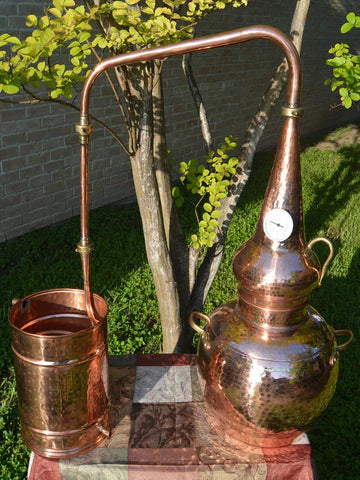There has been a recent trend in the small, independently brewed liquor makers’ community. While men and women all over the world have entrusted their palates to fine liquor makers from established distilleries, there has been growing interest among newcomers to the market, and liquor enthusiasts to produce their own spirits. There can be no mistaking the allure of creating your own concoctions, whether it is whiskey, gin, or any other potent potables. This is why consumers have looked to our website seeking, for example, a 1 gallon copper moonshine still for sale. However, what is often forgotten among whiskey makers is the inclusion of an extra phase in this particular drink’s production: barrels.
While other drinks do not necessarily require the utilization of barrels, such as vodka or white whiskey, the ultimate concoction of a fine whiskey often arises from time spent within barrels. Barrels, as you may well be aware, can come in all sorts of shapes and sizes. If you’ve ever seen a pirate movie, you’ve probably seen barrels of rum or other liquids on the decks of their ships. If you’ve seen a Jameson commercial, you’ve probably seen the eponymous character making some daring act or other in defense of his precious whiskey. However, what you may not realize is how specific and, really, how special the construction of these barrels actually is.
The choice of wood for the barrels often varies, with oak being among the preferred wood types. Because of the alcohol content in whiskey, it acts as a solvent, causing it to break down the compounds contained within the wood of the barrels. As such, the drink which ultimately is borne from this time within the barrel takes on many of the flavors lying dormant within the staves. What eventually finds its way into the bottles (where the aging process is ended) comes from the effects of both the distillation process and the aging process within the barrels. In fact, many independent makers prefer to utilize smaller barrels in an effort to maximize the inner surface of the barrel interacting with the liquid. If a whiskey enthusiast were to buy 1 gallon copper moonshine still and then produce whiskey to be stored in smaller, well-crafted barrels, they would be very happy with the results of this aging process.
Therefore, it is necessary for anyone interested in distilling whiskey and aging it in barrels to select the right ones for the job. While many independent confectioners and whiskey hobbyists may be incline to skip the aging step altogether, it should be noted that the aging process is often said to account for as much as 60% of the whiskey’s eventual flavor. Additionally, the added factors involved with storage location (indoors or outdoors, warm weather or cold weather, rough or still conditions, etc.) will also be primary factors governing the effects upon the finished product.
While the importance of barrels in making whiskey cannot be ignored, I caution you not to undervalue the still's impact upon the finished product. A 1 gallon copper moonshine still for sale on our company’s website will no doubt prove to be a versatile tool in creating many different types of liquor, including but not limited to rum, cider, whiskey, and vodka. However, with the purchase of small and finely constructed barrels, you could even age your own whiskey and, a few years from now, reap the benefits of this patient and thoughtful process. If you do decide to make the dual investment of time and effort, you cannot go wrong with the decision to buy 1 gallon copper moonshine still which is offered by our company. This will no doubt be the first step in a glorious road towards your production of the finest spirits possible.


